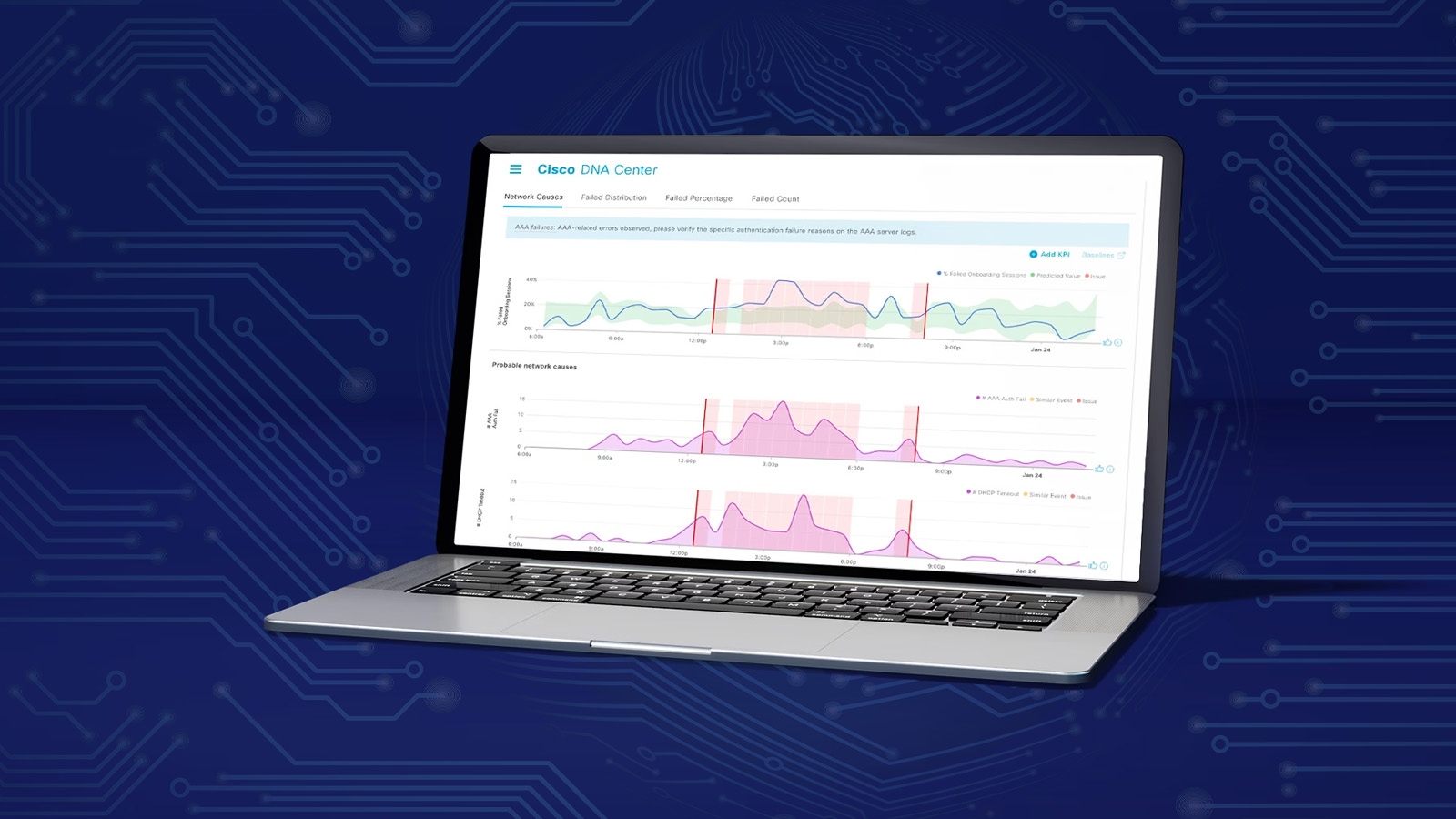 FEATURED
FEATURED
In an unpredictable digital economy, having a reliable, predictable IT infrastructure remains a competitive advantage. But it does beg the question: How confident are you in the underlying technology and staff supporting your business? The stakes, and potential losses, are higher than ever:
- Oxford Economics estimates organizations lose $9,000 per minute of downtime
- BigPanda research puts that number at $23,750 per minute for large enterprises
- In Uptime Institute’s 2025 Annual Outage Analysis, 54% of organizations report that outages cost more than $100,000, while 20% report losses exceeding $1 million
When enterprises go it alone in overseeing their infrastructure, IT teams often struggle to balance innovation upgrades with the relentless demands of keeping systems running, patched, and secure. And it’s not like you don’t want to adopt the newest advancements to improve operations.
That’s why a managed infrastructure model makes more sense. By simplifying operations, optimizing performance, enabling seamless scalability, embedding security, and ensuring predictable IT spending, companies gain resilience and control while freeing internal teams to focus on future enhancements. Of course, opting to go this route is one thing, but knowing what to look for is quite another.
Consider this your helpful blueprint when evaluating managed infrastructure offerings and the providers that bring differentiated technology—and value—to grow your business.
Simplify Operations: Turning Complexity into Clarity
If your modern IT environment is like others, even at smaller to mid-size companies, there is tremendous sprawl that encompasses distributed workforces, hybrid clouds, myriad equipment, and multiple vendors. In the cloud area alone, Flexera’s “2025 State of the Cloud” report says 81% of enterprises already operate a hybrid/multi-cloud environment, adding layers of management complexity. To that point, Flexera’s 2024 IT Priorities Report found that 75% of IT leaders sensed “visibility gaps” across their ecosystem, spanning cloud, SaaS apps, and infrastructure management.
Managed infrastructure services tackle this entangled web head-on. By centralizing monitoring and configuration, standardizing policies, and automating asset management, organizations can create a single source of truth for infrastructure operations. This clarity allows IT teams to redirect resources to innovation and strategy instead of troubleshooting. When assessing potential partners, make sure they have a proven track record in simplifying operations and reducing deployment time.
Case in point: A major hospital system needed to configure 35 Cisco 9410s and 9300s across 20 network closets—more than 13,500 interfaces. By automating port assignments and switch configurations through a managed infrastructure provider, the deployment time dropped from 14 weeks to just 4 weeks, cutting costs by 75% while streamlining ongoing maintenance and documentation.
Optimize Performance to Anticipate Issues Before They Escalate
Contrary to popular belief, performance problems don’t start with outages. They really begin with issues like lagging bandwidth, outdated firmware, or unmanaged capacity—and they really add up. IDC reports that unplanned downtime costs medium-sized enterprises an average of $1.25 million annually, with most incidents traced back to preventable misconfigurations or delayed updates.
Proactive optimization is what separates resilient organizations from reactive ones, and it should be a key focus for any managed infrastructure provider. By offering continuous monitoring, KPI-based performance tuning, and predictive analytics, these partners identify and resolve bottlenecks early. In addition, capacity planning ensures that your systems can absorb demand spikes, while automated patching eliminates the vulnerabilities that slow networks and open security holes.
On the technology side, a vendor like Cisco delivers industry-leading platforms for monitoring, patching, and firmware updates. Working with a certified-Cisco partner to deploy this solution, organizations ensure that performance isn’t just maintained but continuously fine-tuned and optimized for ever-evolving workloads.
Scaling for Growth, Without the Growing Pains
Scaling infrastructure, regardless of an organization’s size, has historically been a friction point. Whether adding new branches, deploying the latest apps, or integrating acquired companies, this can be a tall order, often resulting in patchwork systems. Deloitte forecasts that global IT spending will surpass $5 trillion by 2025, driven largely by cloud adoption, AI integration, and the need for agile expansion. Yet, in a survey just two years ago, more than 75% of U.S. companies expressed concern that their infrastructure will scale effectively.
Managed infrastructure flips that narrative. With blueprint-driven deployments and agile connectivity (such as SD-WAN), businesses can expand without diluting reliability or performance. The most trusted providers should tout services like seamless onboarding of new sites, automated provisioning, and consistent policy enforcement to ensure that every new component added integrates cleanly into your existing environment.
Case in point: A global manufacturing company struggled with fragmented legacy networks from multiple acquisitions. By working with its managed infrastructure partner who deployed a carrier-grade SD-WAN, centralized network oversight, and XDR, MFA, and SOC-backed 24/7 monitoring, the company reduced downtime, unified infrastructure management, and relieved their IT team from the heavy operational burden.
Security and Proactive Defense Across Infrastructure
No infrastructure conversation is complete without security. Cybersecurity Ventures projects that cybercrime damages will reach $10.5 trillion in 2025, while IBM reports that 32% of breaches exploit unpatched vulnerabilities. In other words, the weak points aren’t always exotic zero-day exploits but instead day-to-day gaps in patching, identity controls, and visibility.
This is where a managed infrastructure model can really prove its worth. Instead of relying on in-house IT teams to juggle security piecemeal, organizations turn to their partners to deploy protection that is built directly into the infrastructure layer and continuously managed by outside experts. Not surprisingly, Cisco is also a leader in the security space and—when paired with a certified managed services provider—delivers a reliable, end-to-end safeguard against the most sophisticated, widespread threats. Key components include:
- Next-Generation Firewalls (NGFW/FTD): Firewalls remain the first line of defense, but configuration drift and patch fatigue are common causes of exposure. Managed services ensure Cisco NGFWs are always updated, policies remain consistent across sites, and rulesets evolve as threats change.
- Cisco Umbrella DNS-Layer Security: Many breaches start with a simple click on a malicious link. Umbrella blocks threats at the DNS level, stopping connections to malicious domains before they’re established. In a managed model, those protections are tuned continuously and policy enforcement is consistent across on-prem, cloud, and roaming users.
- Cisco Duo Multi-Factor Authentication: Identity is the new perimeter, especially in a hybrid workforce. Duo ensures every access request is verified, contextual, and adaptive. With managed oversight, MFA policies are kept current and aligned with evolving compliance requirements.
- Cisco Identity Services Engine (ISE): Network segmentation is one of the most effective ways to contain threats, but it’s complex to configure and maintain. With managed ISE, identity-based access controls are enforced dynamically, ensuring the right users connect to the right resources, nothing more, nothing less.
- Cisco SecureX & XDR: Visibility is everything in today’s networks. SecureX integrates telemetry across the Cisco stack and beyond, while Extended Detection & Response (XDR) correlates signals into actionable insights. Managed services transform that flood of alerts into prioritized, contextual recommendations, freeing internal teams from alert fatigue.
Together, these solutions create a layered defense model—prevention, detection, and response—embedded directly into the infrastructure. The value of managed infrastructure here goes well beyond tool adoption as partners deliver continuous optimization, policy alignment, and expert-driven response that evolves with you and the changing security landscape. Just as important, this comprehensive approach streamlines compliance with frameworks like HIPAA, PCI-DSS, and GDPR by providing standardized, audit-ready practices.
Future-Proof with Cloud, Automation, and Predictable Spending
As mentioned earlier, cloud adoption has reached a tipping point with 81% of enterprises operating in a hybrid or multi-cloud environment. But moving to the cloud without optimization often creates cost overruns and latency issues. Harness estimates that 21% of enterprise cloud infrastructure spend (about $44.5 billion in 2025) is wasted on underutilized or idle resources. And in another report, BCG found that 30% of cloud spending is lost, often rooted in poor governance, overprovisioning, and disconnected procurement decisions.
A future-ready infrastructure requires a deft combination of automation/optimization within the tech stack and smarter, predictable spending on the financial side. Here again, a managed infrastructure, leaning on the right partner, helps in both ways:
- Automation & optimization: Automated provisioning reduces human error, while analytics-driven cloud optimization aligns workloads to the most efficient environments. Building resilience into storage, compute, and networking ensures that enterprises can scale today, as well as adapt to the next wave of AI-driven demand and digital innovation.
- Predictable IT spending: Instead of unforeseen CapEx spikes for hardware refreshes and emergency fixes, a managed services provider can create an OpEx-based model with stable, recurring costs. This predictability can be a godsend for IT teams as it enables better budgeting, more accurate ROI calculations, and frees capital for innovation instead of maintenance.
Pinpointing the Right Partner
The trends are unmistakable. Downtime costs are rising, infrastructure is more complex, cyber risks continue to escalate, and cloud demands are accelerating. That’s why organizations, now more than ever, should consider a managed infrastructure from a trusted provider.
To quickly recap, here are the key essentials you should reference when evaluating potential partners:
- Effortless operations through expert management and Cisco-aligned platforms
- Proactive performance optimization that prevents outages before they happen
- Scalability on demand, from branch expansion to hybrid cloud adoption
- Security baked in, from identity management to continuous monitoring
- Future-ready cloud optimization, with predictable IT spending that shifts budgets from firefighting to innovation
With BlueAlly, managed infrastructure becomes more than a safety net as we work with you to build a reliable, predictable foundation for growth—and to keep you competitive at all times. Are you ready to take the first important step? We invite you to learn more and contact us to meet with one of our consultants.











































